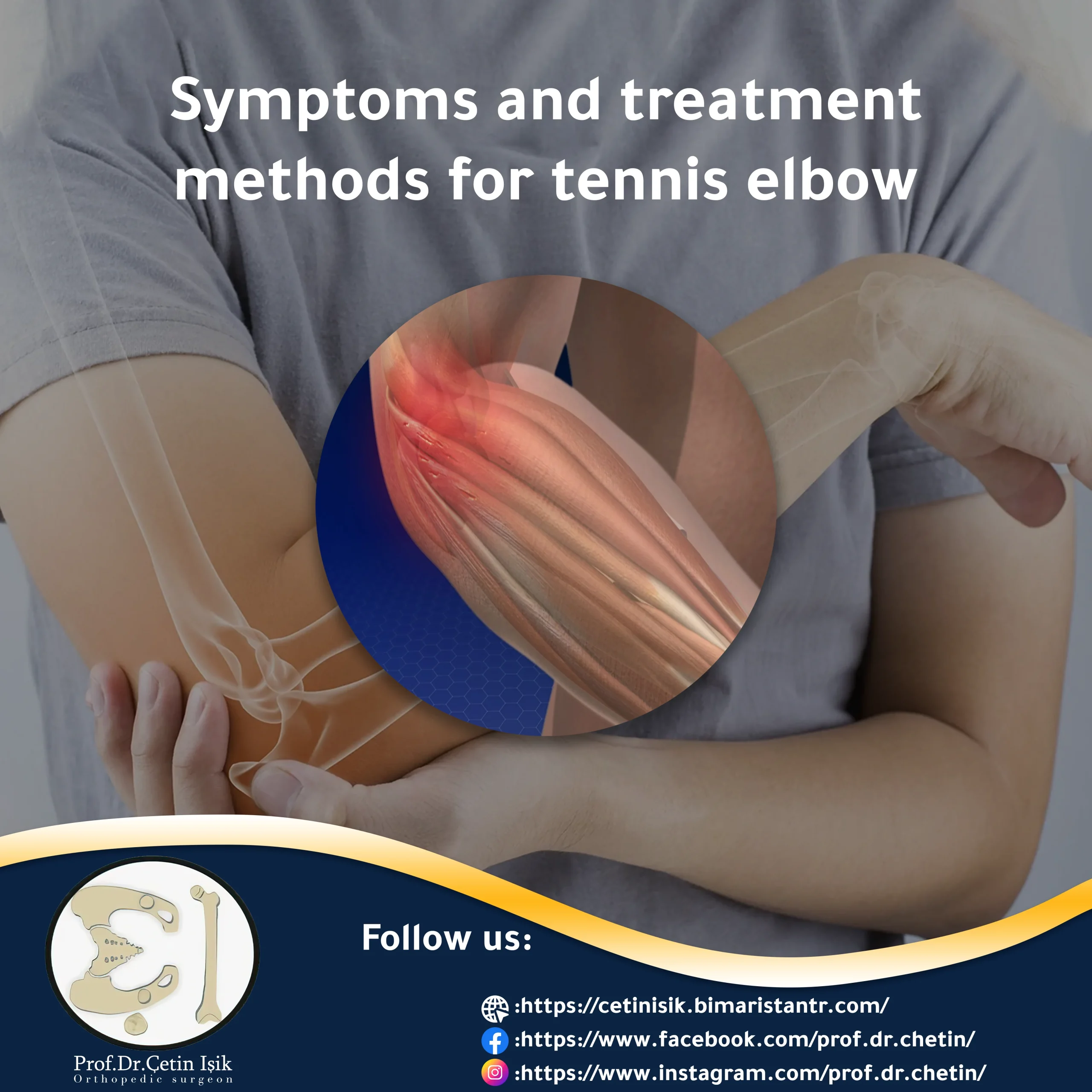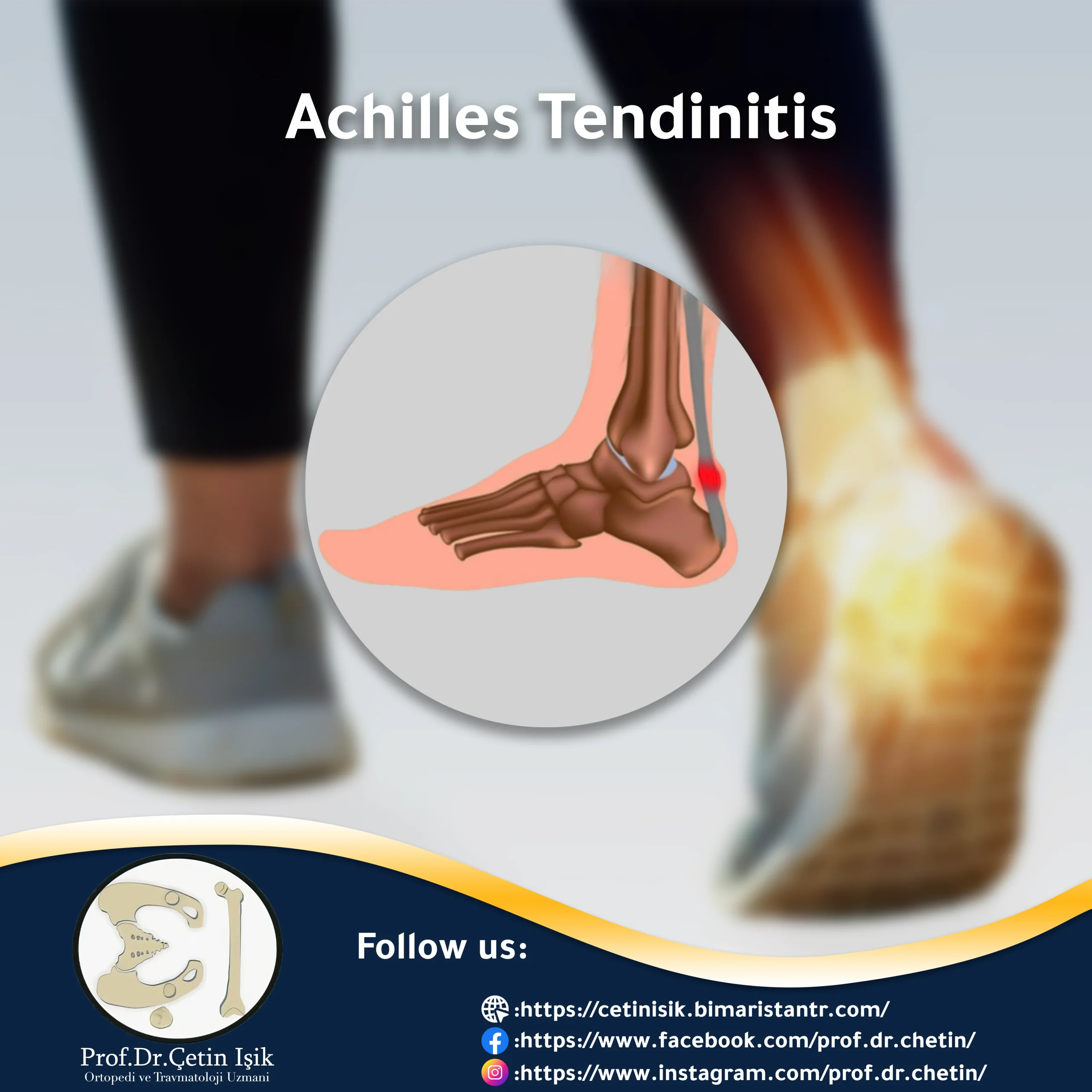Treatment for tennis elbow depends on several factors, including the severity of the pain, the patient's age, the types of medications he takes and his medical history. Treatment aims to reduce pain or inflammation.
What is tennis elbow?
The tendon is the part of the muscle that attaches it to the bones, and the tendons of the forearm connect the muscle to the outer bone of the elbow.
Tennis player's elbow or what is medically called as Lateral epicondylitis lateral epicondylitis is a painful condition caused by overuse or frequent movements of the arm and wrist, as in tennis and other sports.
It is associated with ECRB injury and forearm tendinitis, and over time the soft tissue that connects the muscle to the bone ruptures micro-tears and degeneration, causing external pain in the elbow.

Tennis elbow does not only occur in athletes such as golfers and tennis players or even fencers, it is also common among people who have to perform repetitive movements that strain the muscles of the hands, arm and wrist and involve gripping something with force as in many professions such as butchers, chefs, dentists and musicians .
Common tennis elbow or lateral epicondylitis
Tennis elbow is most common among people between the ages of 30 and 50. It affects both sexes equally and of all races. About 1% to 3% of Americans have tennis elbow.
Playtime is an important factor in elbow damage; The more the practice, the higher the exposure rate for those under the age of forty years, and for older people, the risk of infection is doubled.
Tennis elbow symptoms
Symptoms of lateral epicondylitis, or tennis elbow, tend to appear slowly and gradually, and affect the patient's quality of life and quality of performance of tasks, so it was necessary to start treatment of tennis elbow in the acute phase of inflammation as soon as the patient feels symptoms.
Symptoms of multiple tennis elbow include:
- Elbow pain, which is mild at first and gets worse with days
- Pain that extends from outside the elbow down to the forearm and wrist, and intensifies at night
- Weak hand grip
- Increased pain when shaking hands or pressing something
- Pain when twisting or bending the arm, when lifting something or when using tools and even opening cans
- Stiffness when extending the arm
- Painful swelling when touching the elbow joint
can Contact us to answer your questions; If you have any questions about the symptoms and treatment of tennis elbow.
Diagnosis of tennis elbow in Turkey
It is usually diagnosed by a doctor Tennis player's elbow tennis elbow Through a physical examination of the patient, asking about health and occupational history and stages of development of symptoms, the doctor makes a slight movement of the elbow to assess the movement of the elbow, and applies light pressure on the elbow in the area of swelling to determine the degree of pain.
To confirm the diagnosis, the doctor will order radiographic tests such as:
X ray: They are the ideal choice to confirm the diagnosis, as they are important in ruling out other disorders that can cause elbow and arm pain, such as fractures or arthritis.
MRI: To detect excess fluid and swelling in the affected area of the patient's elbow, such as the meeting point of the forearm bone and the radial flexor short muscle of the wrist.
tennis elbow treatment
Tennis elbow symptoms may improve on their own with a little care and treatment appropriate to the patient's activities, however this recovery may take up to 18 months for the elbow to return to normal.
Tennis elbow treatment is divided into conservative management and surgical treatment, which we rarely resort to if the initial treatment fails
Conservative management of tennis elbow includes a wide range of treatment options including physical therapy, physical therapy and non-invasive, minimally invasive techniques proven to speed up the healing of tennis elbow, and in most cases it is preferable to combine more than one method together for a better result.
Treatments for tennis elbow include:
Rest: It's important to rest the elbow, reduce or stop activities for several weeks to give the tendons time to heal, and to keep the elbow's simple motion within its normal range.
Taking medicines: Kpainkillers Such as paracetamol and topical non-steroidal anti-inflammatory drugs (NSAIDs), which include ibuprofen and naproxen, which are applied directly as an ointment above the elbow and are considered The best ointments for inflammation; It helps reduce pain and inflammation of the tendon associated with tennis elbow.
Braces: Your doctor may recommend wearing an orthosis or a removable external elbow brace that removes tension or spasm from muscles and tendons and improves elbow motor function. There are two main types of elbow brace that may be prescribed for tennis elbow:
- Counterforce orthosis: It has a structure that surrounds the arm, and contains a compressive ligament that applies a connective force to the origin of the wrist extensor muscles, thus reducing the elongation within the tendon fibers.
- Wrist Extension orthosis: Keeps the arm in a slight stretch, this position relieves overloading effort in the area of injury.


Physical therapy: Helps treat tennis elbow through massage or the use of ultrasound and muscle stimulation techniques by improving elbow function and accelerating treatment, under the supervision of specialists in an equipped center.
Treatment with steroid injections: It is performed by the doctor under the guidance of ultrasound to reach the correct area, as the injection of corticosteroids reduces joint pain temporarily and relatively short.
Treating tennis elbow with natural herbs: The use of some types of herbs may benefit in treating tennis elbow and tendonitis and significantly reduce the severity of swelling due to their anti-inflammatory properties with the scarcity of side effects, and these herbs include ginger, turmeric, fenugreek and garlic.
Tennis elbow treatment with dry needling: Acupuncture can be considered a safe treatment that helps relieve pain by increasing blood flow towards the elbow, thereby reducing tendon inflammation without any side effects.
PRP treatment for tennis elbow: It has been proven that the injection of platelet-rich plasma helps to speed up the treatment process of the tennis elbow, but its long-term effectiveness is not yet known. A small amount of the patient’s blood is taken, where the platelets are separated from them to be reinjected into the affected elbow under ultrasound guidance. The process takes Only about 30 minutes.

Extracorporeal shock wave therapy: More research is needed into the effectiveness of this technique for tennis elbow, in which the scar tissue breaks down by passing high-energy waves through the skin, improving blood flow towards the affected elbow, although it is a safe procedure but may cause bruising or redness of the skin.
Minimally invasive tendonotomy: The doctor removes the degenerated tendon tissue using a special needle, and this procedure is a good alternative to surgery.
Surgical treatment of tennis elbow
In a few cases, a tennis elbow patient resorts to surgery. If the symptoms do not improve after 6 to 12 months of the previous treatment, the specialist doctor recommends a surgical operation that suits the condition of the tennis elbow patient and the severity and age of the injury, such as:
Arthroscopy, open debridement and tendon repair.
Surgery usually involves removing the damaged portion of the affected tendon and muscle and replacing it with tendons and muscles from a different part of the body.
Surgery successfully treats tennis elbow injury in 80% to 90% cases, however it is common for the sufferer to experience some loss of muscle tone.
Finally, you can contact Dr Çetin Işık To determine the best tennis elbow treatment for your condition.
Tennis elbow prevention
There are many ways to avoid tennis elbow or even prevent a recurrence of elbow inflammation. The following are recommended:
- Choose the right equipment and the right techniques for each sport or task.
- Warm up properly and gently tighten the arm muscles before doing any exercises that include repetitive movements, such as tennis or squatting.
- Do exercises that maintain flexibility and strength of the forearm.
- Applying ice or cold compresses to the elbow after intense physical activity.
- Rest the patient's elbow in case of pain when bending or extending the arm.
Sources:
Common questions
Tennis elbow can make a change in the patient's life, as it increases the difficulty of performing various physical activities related to the use of the fist, and hence the necessity of treatment.
But in general, tennis elbow does not cause serious long-term problems.
Tendonitis may develop if tennis elbow is neglected and the elbow is not rested. Recovering from mild to moderate tendinitis takes 2 to 3 weeks.
If symptoms persist for more than three months, or tennis elbow is left untreated, it can lead to the transition to the chronic stage.




